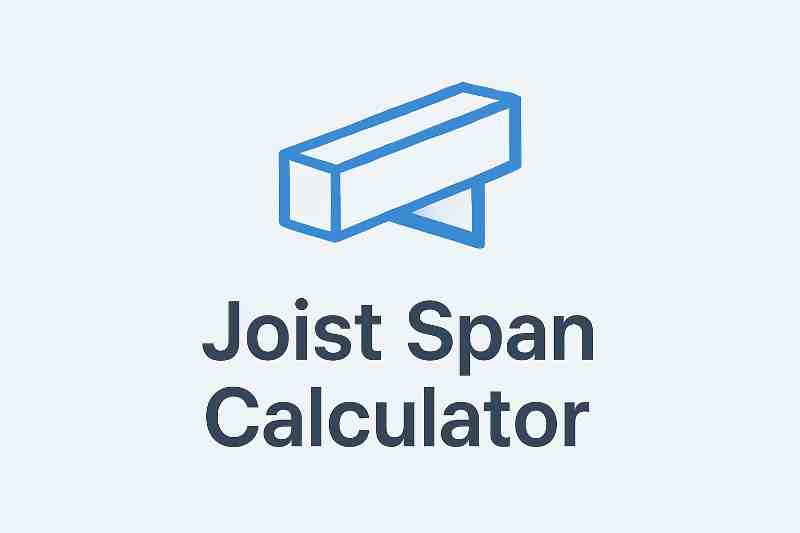Calculating the board feet of lumber is a crucial step for anyone working with wood—whether you’re a contractor estimating materials, a woodworker planning a project, or a buyer trying to understand how much wood you’re getting. But figuring out board feet manually can be confusing and time-consuming, especially when dealing with multiple pieces or varying sizes.
That’s why we created this free Lumber Board Feet Calculator to help you quickly and accurately calculate the volume of lumber you need. Simply input the thickness, width, length, and quantity for each piece, and get instant results. You can even calculate board feet for logs using the Doyle scale, add multiple rows for bulk calculations, and export your results as CSV or PDF files.
Save time, avoid costly mistakes, and make smarter lumber decisions with our easy-to-use calculator and comprehensive guide
Board Feet Calculator
| Thickness (in) | Width (in) | Length (ft) | Qty | Action |
|---|---|---|---|---|
What is a Board Foot?
A board foot is a standard unit of measurement used primarily in the lumber industry to quantify the volume of wood. It represents a volume of wood that measures 1 inch thick, 12 inches wide, and 1 foot long. In simpler terms, one board foot equals 144 cubic inches of wood.
This measurement helps buyers, sellers, and woodworkers understand how much lumber they have or need without dealing with complicated volume calculations. Instead of measuring the entire cubic volume, the board foot provides a straightforward way to calculate and price lumber based on its thickness, width, and length.
Understanding board feet is essential when purchasing wood by the board or estimating how much material is required for construction, woodworking projects, or remodeling jobs.
Why You Need to Calculate Board Feet
Accurately calculating board feet is essential for anyone working with lumber because it directly impacts your project’s cost, material planning, and efficiency.
Save Money
By knowing the exact board feet, you avoid overbuying lumber, which can save you a significant amount of money. It also helps prevent costly mistakes from underestimating how much wood you need, which can delay your project and increase expenses.
Efficient Material Planning
Calculating board feet allows you to plan your purchases precisely. Whether you’re buying rough-cut hardwood, dimensional lumber, or logs, understanding board feet helps ensure you get the right quantity and dimensions for your needs.
Pricing and Selling
If you’re in the lumber business or selling wood products, quoting prices by board feet is standard practice. Clear knowledge of board feet makes it easier to negotiate, invoice, and keep accurate inventory.
Reduce Waste
When you calculate board feet properly, you can optimize cuts and minimize waste, making your project more sustainable and cost-effective.
Using our free calculator simplifies this process especially when dealing with multiple lumber sizes or logs so you can make informed decisions quickly and confidently.
How to Calculate Board Feet of Lumber (Step-by-Step Guide)
Calculating board feet is straightforward once you know the formula and how to apply it correctly.
The Board Foot Formula:
Board Feet = (Thickness (in) × Width (in) × Length (ft)) ÷ 12
- Thickness and Width are measured in inches.
- Length is measured in feet.
- Dividing by 12 converts the volume from cubic inches × feet into board feet.
Step 1: Measure Thickness, Width, and Length
Use a reliable measuring tool like a tape measure or caliper. For thickness and width, measure the actual dimensions in inches (not nominal sizes). Length should be measured in feet.
Step 2: Plug the Measurements into the Formula
Multiply thickness × width × length, then divide the result by 12.
Step 3: Calculate Board Feet for Multiple Pieces
If you have multiple pieces of lumber with the same dimensions, multiply the result by the quantity of pieces.
Example Calculations:
| Description | Thickness (in) | Width (in) | Length (ft) | Quantity | Calculation | Board Feet |
|---|---|---|---|---|---|---|
| Single 1″ x 6″ x 10′ | 1 | 6 | 10 | 1 | (1 × 6 × 10) ÷ 12 | 5.00 BF |
| Bundle of 10 boards | 1 | 6 | 10 | 10 | ((1 × 6 × 10) ÷ 12) × 10 | 50.00 BF |
| 2″ thick, 8″ wide, 12′ | 2 | 8 | 12 | 3 | ((2 × 8 × 12) ÷ 12) × 3 | 48.00 BF |
Quick Tips:
- Use actual measurements, not nominal sizes.
- Always measure lumber carefully for precise calculations.
- Our calculator can handle all these calculations for you automatically!
Bulk Board Feet Calculation with the Calculator
Calculating board feet for multiple pieces of lumber manually can quickly become tedious and prone to errors. That’s why our multi-row Lumber Board Feet Calculator is designed to make bulk calculations easy and accurate.
How to Use the Calculator for Bulk Calculations:
- Enter Dimensions: For each piece or size of lumber, input the thickness (in inches), width (in inches), length (in feet), and quantity.
- Add or Remove Rows: Use the “Add Row” button to input as many different lumber sizes as you need. Remove rows if necessary.
- Calculate Total: Click the “Calculate Total” button to instantly get the sum of board feet for all entries combined.
- Export Your Results: Download your calculations as a CSV file for spreadsheets or a PDF report for easy sharing and record-keeping.
Why Use Bulk Calculation?
- Perfect for contractors ordering various lumber sizes.
- Helps woodworkers manage multiple project components.
- Ideal for lumber yards estimating total volume in inventory.
- Saves time and reduces manual calculation errors.
With this tool, you can manage your lumber calculations all in one place, simplifying your workflow and improving accuracy.
Calculating Board Feet of Logs (Doyle Scale and Others)
When working with logs rather than sawn lumber, calculating board feet requires different methods because logs are round, irregular shapes—not rectangular boards. One of the most common systems used in the U.S. and Canada is the Doyle Scale, which estimates the amount of lumber that can be sawn from a log.
Doyle Scale Formula
Where:
- D = Small-end diameter of the log in inches (minimum 8 inches for accuracy)
- L = Log length in feet
Example Calculation:
For a log with a diameter of 14 inches and length of 12 feet:
Other Log Scales
Besides Doyle, other log rules include:
- International ¼” Rule
- Scribner Rule
These scales use different formulas and assumptions about log taper and saw kerf, and usually give slightly different board foot estimates. The Doyle scale tends to be conservative.
Using the Calculator’s Log Tab
Our calculator includes a Log mode where you simply enter the log’s diameter and length, and it calculates an estimated board feet value using the Doyle scale automatically.
Common Lumber Sizes and Their Board Feet
When working with lumber, it’s important to understand how common sizes translate into board feet. Lumber dimensions are often given in nominal sizes (e.g., 2×4, 1×6), but the actual sizes are usually slightly smaller. Knowing the actual dimensions helps you calculate board feet more accurately.
Below is a handy reference table showing common lumber sizes, typical actual dimensions, and their corresponding board feet for standard lengths.
| Nominal Size | Actual Size (inches) | Length (feet) | Board Feet (per piece) |
|---|---|---|---|
| 1×6 | 0.75 × 5.5 | 8 | 3.67 |
| 2×4 | 1.5 × 3.5 | 10 | 4.38 |
| 2×6 | 1.5 × 5.5 | 12 | 8.25 |
| 2×8 | 1.5 × 7.25 | 16 | 14 |
| 4×4 | 3.5 × 3.5 | 8 | 8.17 |
| 4×6 | 3.5 × 5.5 | 12 | 19.25 |
| 6×6 | 5.5 × 5.5 | 16 | 40.67 |
How to Use This Table
- To calculate board feet for any piece, multiply the thickness, width, and length (in feet) using the actual sizes, then divide by 12.
- For example, a 2×4 lumber actually measures 1.5″ thick × 3.5″ wide. For a 10-foot length:
- Use this table to estimate quickly or enter your own measurements into the calculator above for exact numbers.
Why Actual Sizes Matter
Nominal sizes (the names of lumber sizes) are often larger than the actual finished dimensions due to planing and drying. For accurate board feet calculation, always use actual dimensions.
Tips for Accurate Measurement and Calculation
Accurate measurements are the foundation of correct board feet calculations. Here are some important tips to help you get precise results:
1. Use Actual Dimensions
Always measure the actual thickness and width of your lumber, not just the nominal sizes. Nominal sizes (like 2×4 or 1×6) often differ from the true finished dimensions because lumber is planed and dried.
2. Measure Carefully
Use a reliable tape measure or caliper to measure thickness and width in inches, and length in feet. Round measurements to the nearest 1/16 inch for best accuracy.
3. Account for Quantity
When working with multiple pieces of lumber, multiply the board feet of one piece by the total number of pieces.
4. Moisture Content Doesn’t Affect Board Feet
Board feet measures volume, so variations in moisture content won’t change the board feet value, although they do affect weight.
5. Measuring Irregular or Rough Lumber
For rough-cut or irregular boards, measure the average thickness and width at several points, then use those averages in your calculations.
6. Use the Right Tools
Our Lumber Board Feet Calculator helps you avoid manual errors by allowing bulk entry and instant calculations. For length-based measurements without thickness or width (like fence boards or pipes), you might want to use a Linear Feet Calculator instead.
Use this formula:
Board Feet = (Thickness (in) × Width (in) × Length (ft)) ÷ 12
Multiply thickness, width, and length, then divide by 12 to get board feet.
These terms refer to the thickness of rough-cut lumber in quarters of an inch.
- 4/4 lumber = 1 inch thick
- 8/4 lumber = 2 inches thick
Logs are measured using special formulas like the Doyle scale:
Board Feet = ((D - 4)2 × L) ÷ 16
Where D is the small end diameter in inches and L is length in feet.
Yes! Calculate the board feet for one piece, then multiply by the number of pieces. Our calculator supports bulk entries for multiple sizes and quantities.
Nominal sizes (like 2×4) are the rough-cut dimensions before planing and drying. Actual sizes are smaller (a 2×4 typically measures 1.5″ × 3.5″). Always use actual sizes for precise board feet calculations.
Yes! The calculator allows you to export your results as CSV or PDF files for easy sharing and record-keeping.
No, board feet measure volume, so moisture content does not affect the calculation. However, moisture does affect weight and may impact pricing in some cases.
If you only have length information (linear feet), use a Linear Feet Calculator to assist with your measurements.
Conclusion
Accurately calculating board feet is essential for anyone working with lumber—whether you’re a DIY woodworker, a contractor, or a lumber supplier. Understanding how to measure and calculate board feet helps you buy the right amount of wood, control costs, and minimize waste.
Our easy-to-use Lumber Board Feet Calculator takes the guesswork out of manual calculations, supporting bulk entries, log measurements, and exporting your results for your records. Combined with the information and tips provided here, you’ll be well-equipped to manage all your lumber projects efficiently and confidently.
Ready to simplify your measurements? Try our calculator now and take the hassle out of lumber calculations!



